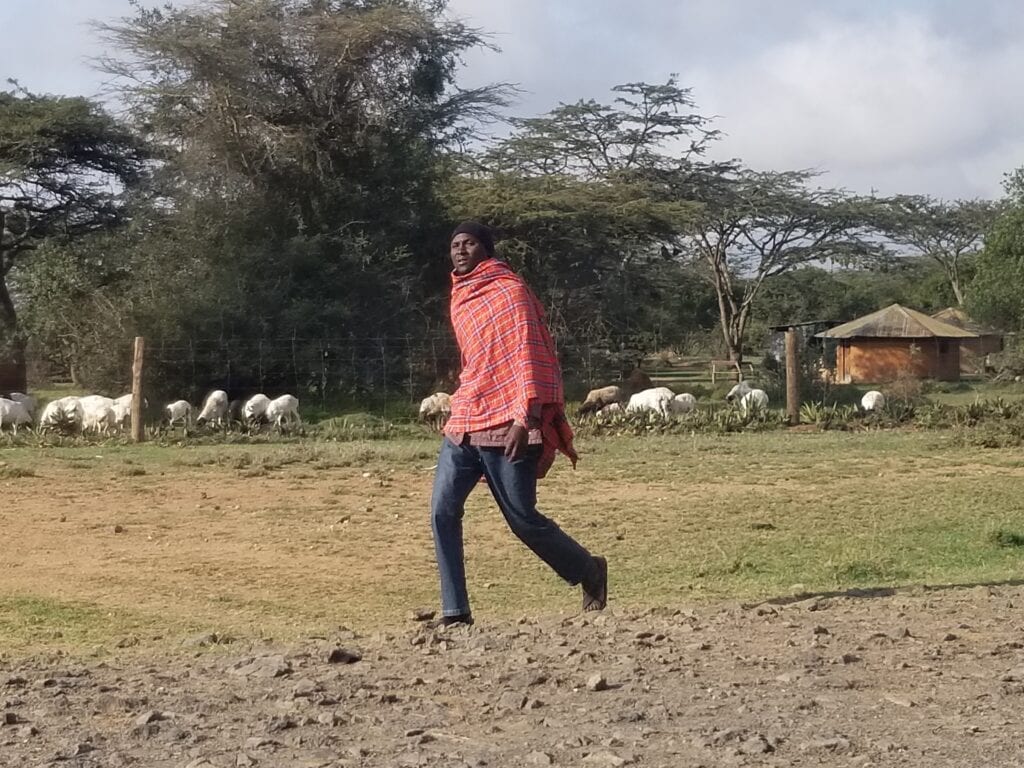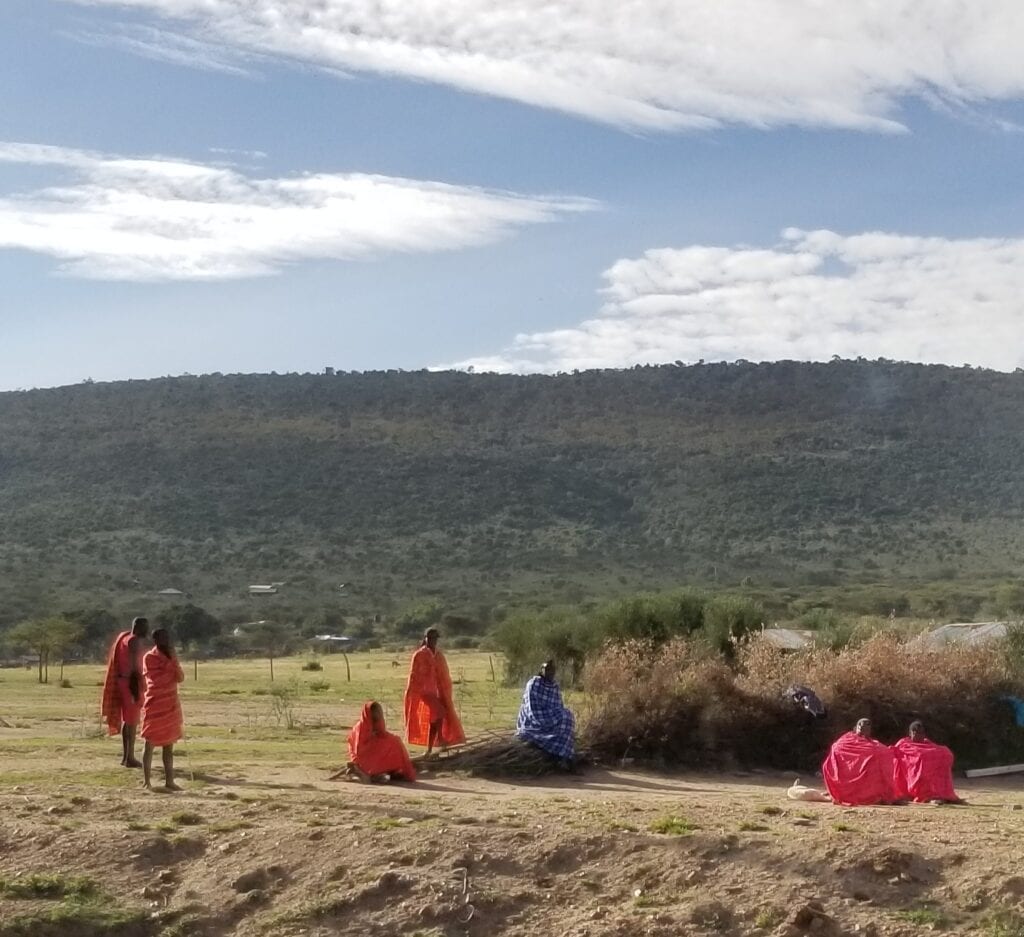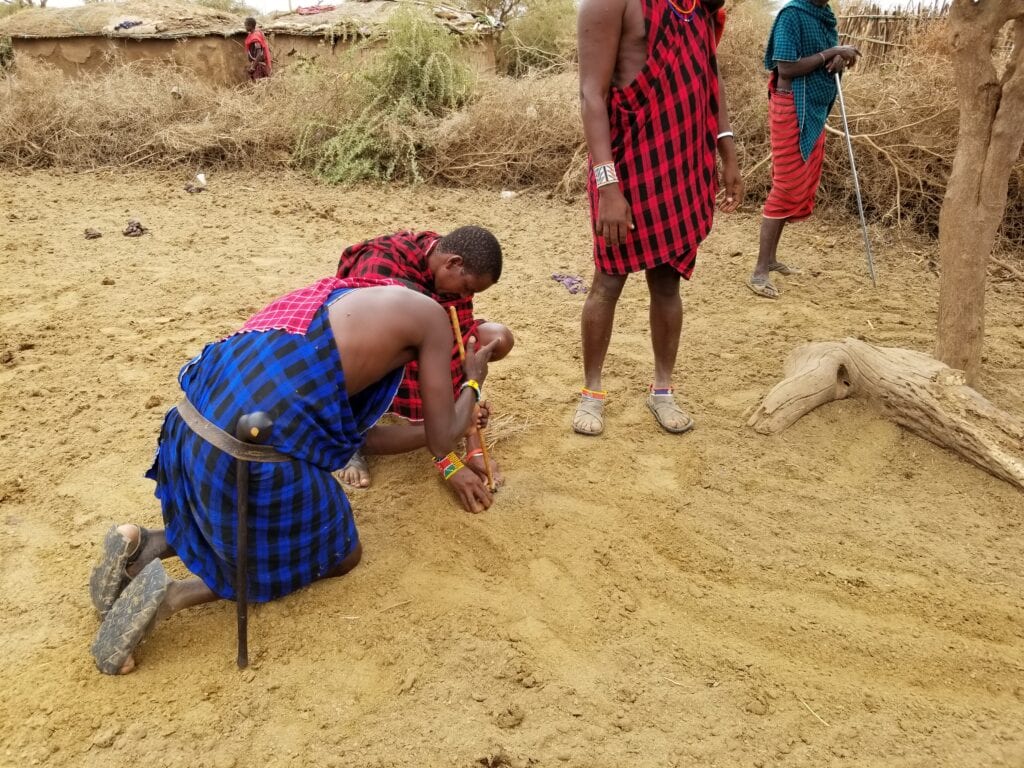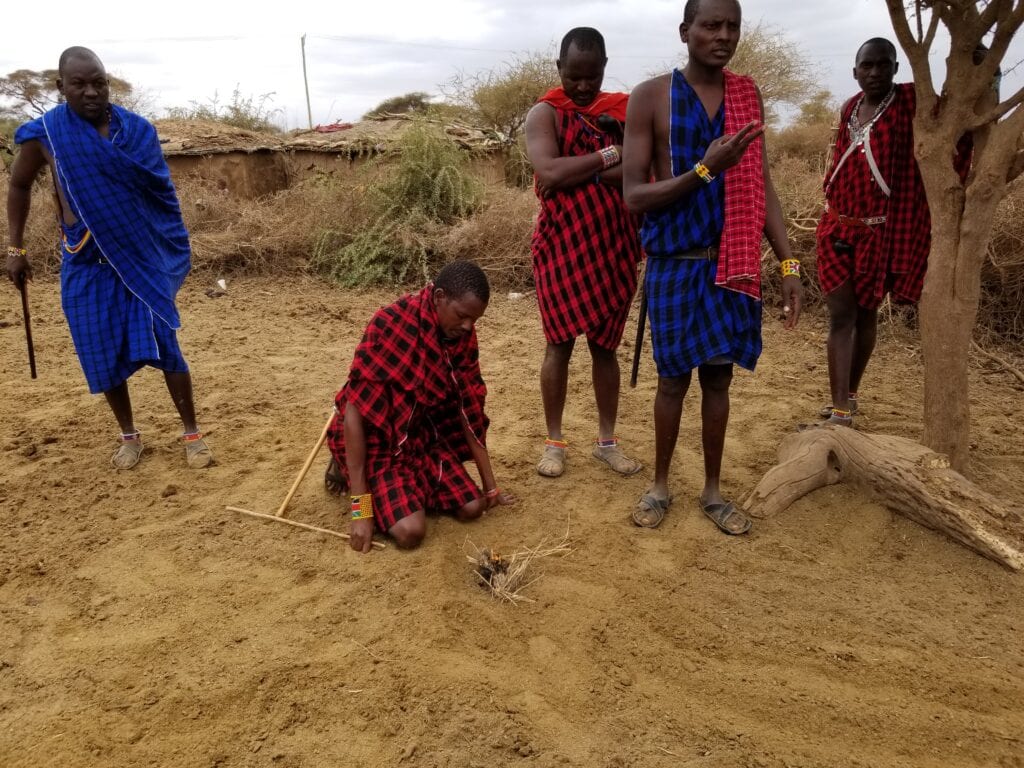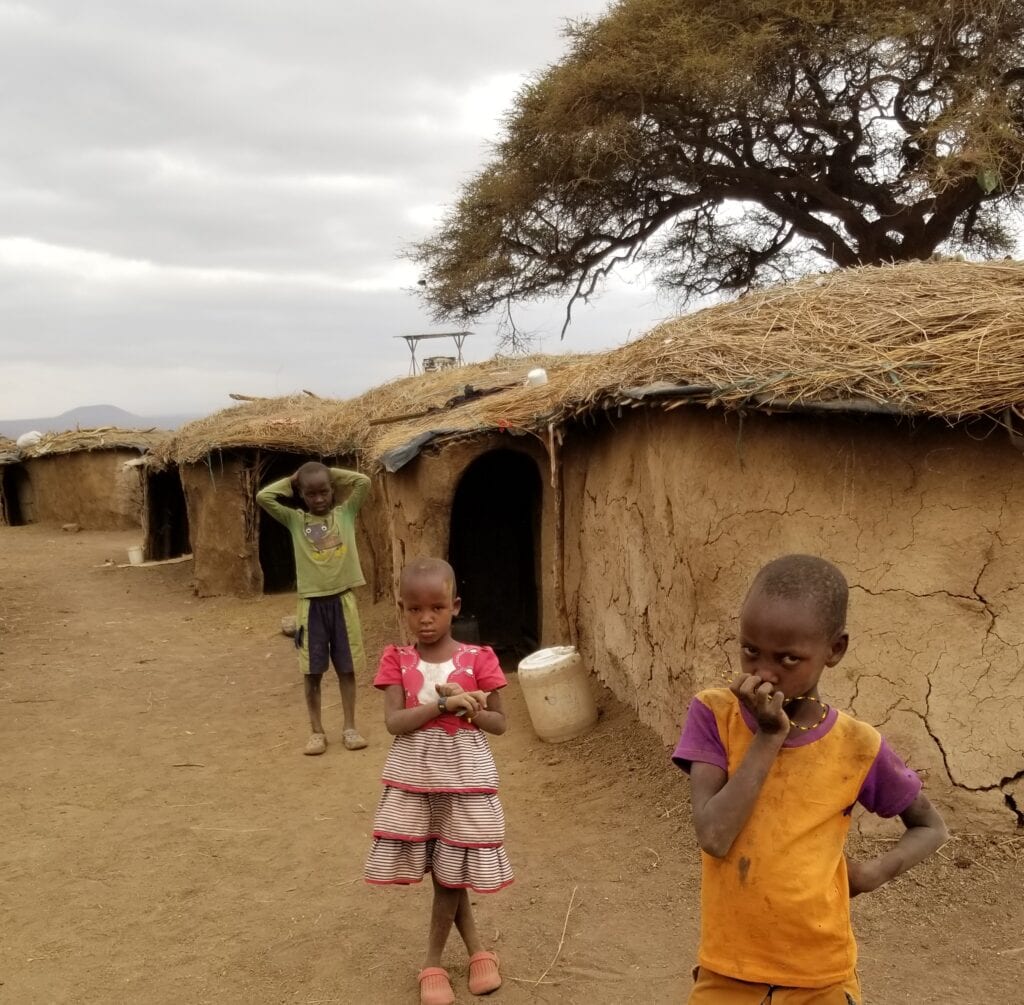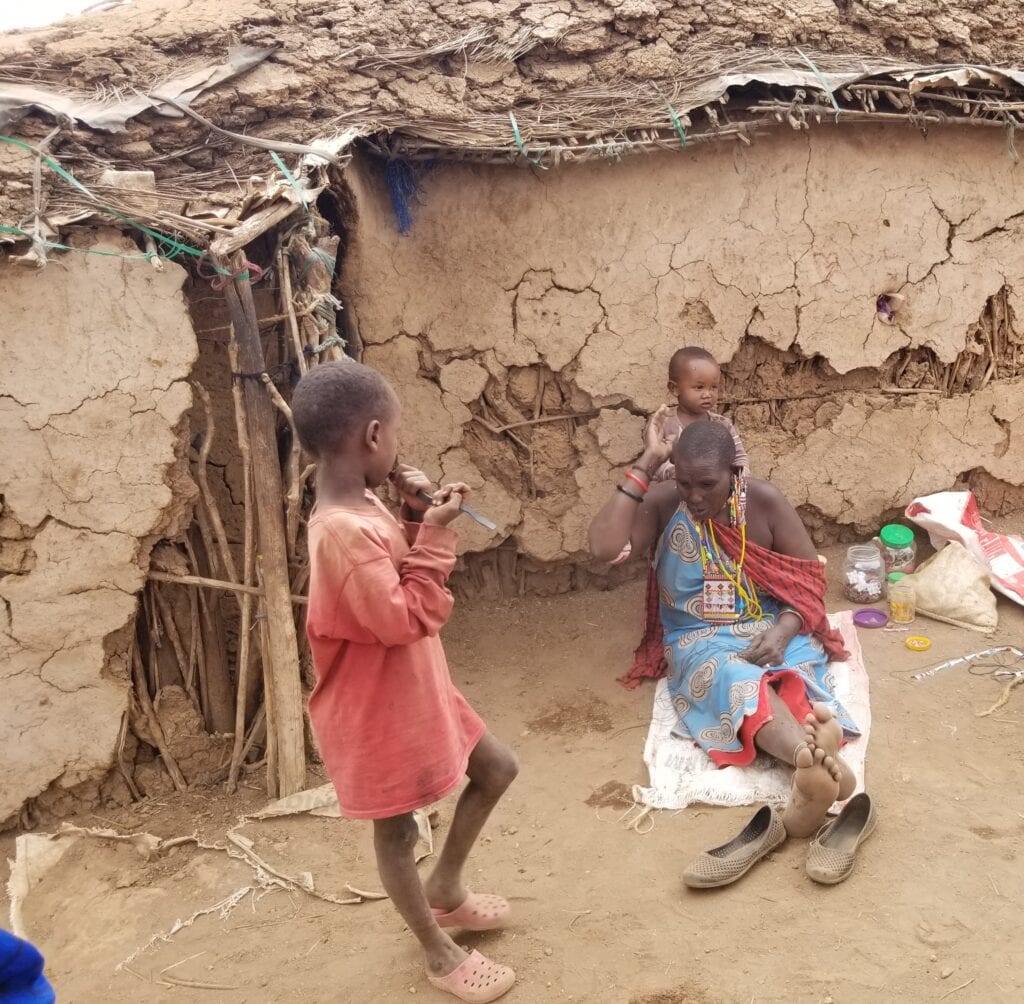Search Posts
Recent Posts
- Fun Stuff To Do When You Are Feeling Blah or Just Need Something New and Different? July 13, 2021
- Do you Have a Why?? July 1, 2021
- Black Health Rising!! June 28, 2021
- Namaste Right Here for Now November 29, 2020
- Mixed Leafy Green Vegetables November 28, 2020
Categories
Subscribe!
Thanks for subscribing! Please check your email for further instructions.


The Maasai, Residents of Amboseli Area
Along with the lions, wildebeests, zebras and elephants, Amboseli area is also home to an enterprising Maasai community. They host tours of their village and give a brief overview of traditional culture for tourists. It is unclear to me if the tribespeople that we met really live within the village that we visited, and I suppose it doesn’t matter. I imagine it was like any old-timey cultural village where the people dress-up and play act like they are people from times gone by. Only in this case, the “times gone by” are the very recent/current past. (That may be a new term: current past….not sure, but it fits this situation.)
I do know for sure that many Maasai people have left the small villages and moved to other areas to earn a better/different living. The Maasai are in all areas and economic sectors. To read more go to http://www.siyabona.com/maasai-tribe-east-africa.html
Maasai people wear red a lot of the time. It is an identifying feature for them very often, and wherever they go.
I asked a few of the warriors why they use red so often. I got 4 different answers from 4 different warriors:
- Red is for war. When the Maasai warriors are going into battle, the sight of so many men dressed in red advancing across the plains strikes fear in their adversaries.
- Red is visible to the animals on the plains. It helps keep the animals away and the people safe when they are herding their cattle.
- Red is for everyday wear. Maasai people prefer red cotton cloth as it is cool and they feel comfortable and protected. Medicine men, and those recently married wear blue, sometimes.
- Red reminds them of the food they eat: milk, blood and meat.
When we arrived at the Maasai village, a group of adults performed a welcome song for us tourists. It lasted maybe seven minutes. Here is a very short bit. Sorry it is so abbreviated, but this is all that this software will allow me to upload.
After the song and a prayer in their own language, we were invited into the village circle. There, the chief’s sons showed us how they make fire by spinning one stick against another over dry grass and cow dung. The 2 gentlemen building the fire are princes, sons of the chief.
Next, we went to see the village houses and hear about family structure, roles and medicine.
It is important to know that Cattle = Wealth in the traditional Massai culture. The chief’s sons told us that traditionally, the first wife is chosen for the son in an arranged marriage. All wives after the first, can be the the young man’s choice. A man can have as many wives as he can afford, but first he has to have the cattle for the bride price.
They said this chief, their father, has 11 wives and 45 sons. I asked them if a woman could have as many husbands as she wanted. That was a hard “No.” (Yeah, I knew that already, but I just had to ask anyway.)
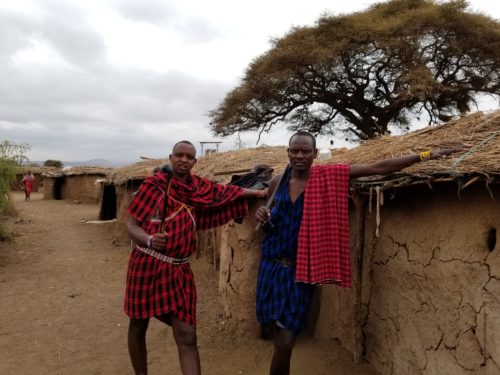
The princes made it clear that the women are responsible for building construction. Each wife has a separate house. The houses are made of dirt, water and cow dung. You can see the houses in the picture above. A house is expected to last 5 years, although given the Maasai’s semi-nomadic lifestyle, traditionally, they move the houses every 6 months. The doors all face in, toward the center of the village circle. Inside that circle, the Maasai create another circular pen of thorny branches. This is a corral for the cattle. The cattle stay inside the corral at night for protection. So, if we had an arial view, the village would look like a set of concentric circles. There is a ring of thorns in the center, surrounded by a ring of round mud and dung huts, surrounded by another thick ring of thorns. At night the cattle stay protected within the centermost ring.
With the cattle being so important to the Maasai, they are cared for and fiercely protected. Now, full disclosure, in my totally American opinion, the village smelled strongly of cow. There were a lot of flies…and fresh cow dung….just about everywhere…. That’s not really a surprise, I suppose, since cows are at the center of the lives of this group of people. Actually, based on the relationship the Maasai have with cattle, they probably don’t even smell “cattle” in quite the same way a non-cattle lover would. I can say though, that in the USA, on average, cow dung and flies are not highly valued. In fact, that’s an understatement….actually, we pretty much despise both. Well, unless I am growing a garden and I want manure for fertilizer. And no matter what, we pretty much don’t want anything to do with either flies or cow dung in the house, or on us, EVER. So by the time the 100th fly landed on me, I was ready to scream!
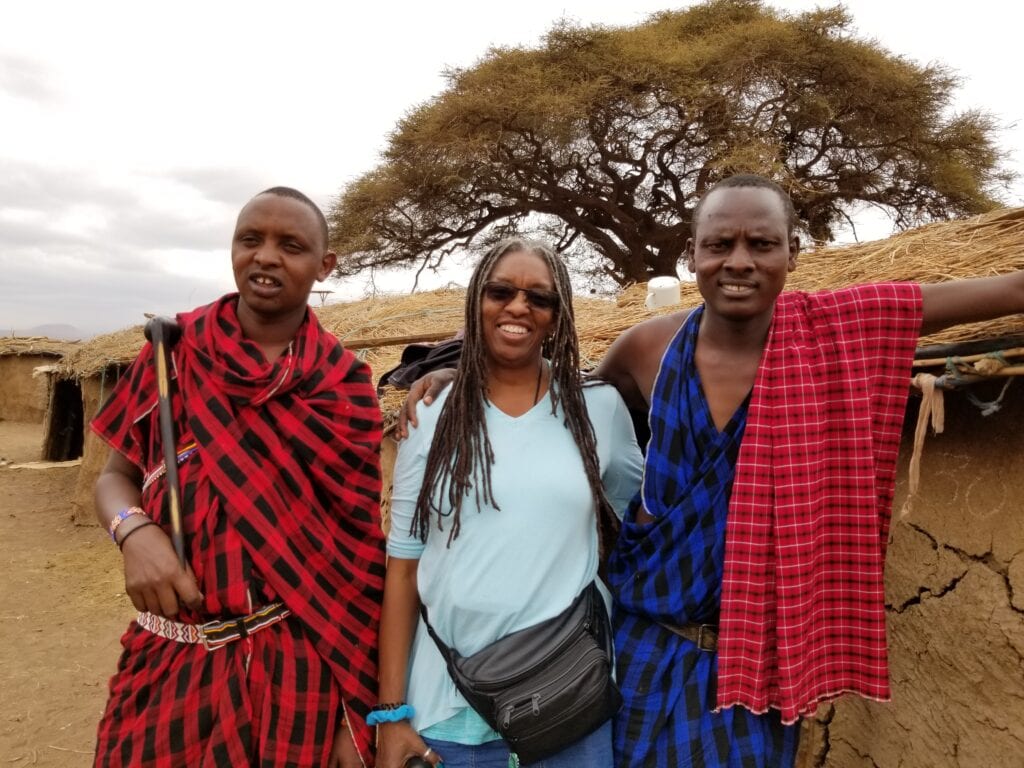
Right about when we snapped this picture, I was talking through my teeth to these two young princes, telling them, “I would go crazy if I had to live with all these flies.” They just laughed and said, “No, you would not go crazy. You would work, and build the house.” I got a good laugh out of that visual myself! If they only knew that in my family, my husband Jeff (aka Mr. Fix-it), built our house, himself. He gets nervous if I even pick up a hammer! Too FUNNY!
The prince in red, invited me inside one of the houses. Before we went inside, he pointed out that the exterior walls are made of mud and the roof is made of grass that is sewn together. The next thing the prince pointed out was that there are only a few small open window holes in the exterior walls. The holes are about 3”x6”. With such small openings in the walls, inside the hut was pitch dark. The huts have no running water, toilets, or electricity. The interior walls are composed of hardened cow dung. There is a central room where the family cooks over an open flame. They also eat and spend time in the main room in bad weather. There are two sleeping areas, one for the children, and one for the parents. Here I am sitting on a stiff leather sleeping mat in the entrance way to the children’s sleeping room. Below that is a picture of the parent’s bed.
The prince in the blue shuka (drape) is the village medicine man. He told us about the traditional herbal medicines the Maasai have used for the past few hundred years. He told us about a few more interesting cultural traditions. For example, he told us that when a woman is pregnant she is not allowed to eat much. The goal is to limit the woman’s food intake to keep the developing fetus small. This makes it easier to deliver the baby. The baby is named after the grandfather or grandmother. So the same names are used in the same family, generation upon generation. As I stated earlier, the Maasai’s diet is mostly curdled milk mixed with blood. They also eat meat, but their mainstay is blood and milk. I asked the princes if they ever eat vegetables. That was another hard, “No.”
Maasai women are known for the quality of their beadwork. We were escorted into a small outdoor area where many of the women, and some of the children were sitting on blankets selling beautifully beaded jewelry and other crafts.
Here are some other pictures taken in the village.
As we were leaving, the princes invited me to come back in 2 weeks because it would be time to move the houses. They wanted me to come back and help. I told them, “That sounds like a lot of fun, but I won’t be able to make it because I have to go back to my home. Besides, I do not eat animals and you have no vegetables, but thanks for asking.” We laughed and said good-bye.
Caution. This is a Nerdy Section: One last thing I want to add about the Maasai. One might think that living on a diet of milk and blood would have some negative effects on the Maasai’s heart health. A while ago, I read study about the incidence of cardiovascular disease among the Maasai males https://www.ncbi.nlm.nih.gov/pubmed/18523037 and an analysis of 2 other studies https://nutritionstudies.org/masai-and-inuit-high-protein-diets-a-closer-look/ . The studies show that even though the Maasai consume mostly milk, blood and meat, and they have extensive atherosclerosis, there was no evidence of heart attack in a group of Maasai males studied by autopsy. It appears that in this population, the diameter of the heart blood vessels increased such that blood vessel thickening did not significantly block the flow of blood to their hearts. Scientists speculate that their extreme exercise levels such as herding cattle 15-30 miles a day, intermittent fasting, very low weight for height, or genetic adaption, singularly or in combination, could result in the large size of the heart vessels in the male Maasai studied.


